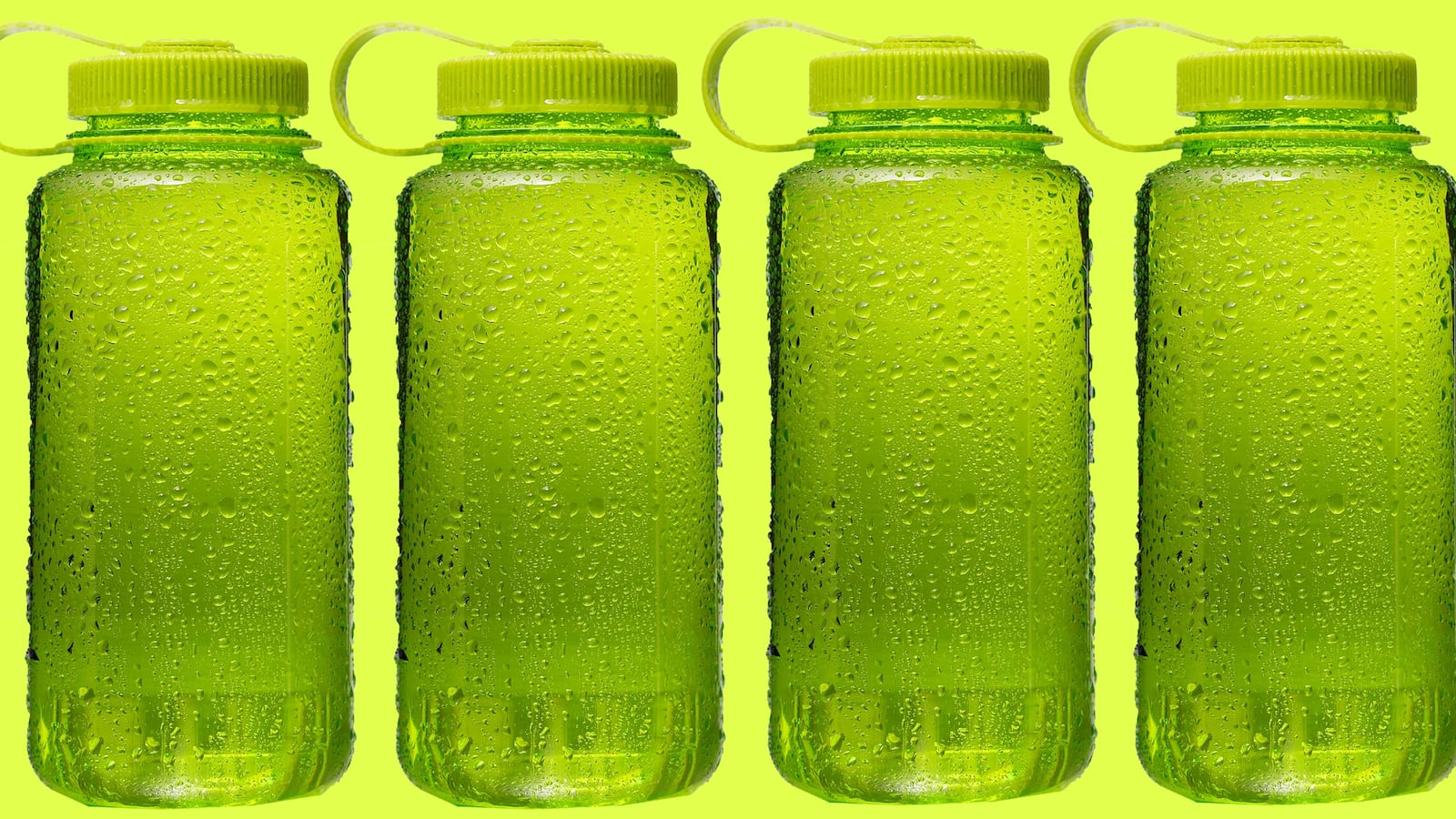The Food and Drug Administration says that small amounts of the chemical BPA— about the amount that might leak out of a plastic water bottle, for example—aren’t enough to affect anyone’s health.
That’s been the FDA’s position since 2008, and it’s the same conclusion reached by its recent two-year study on the toxicity of the chemical compound, which is set to be formally published at the end of the month. The agency discussed the findings in a webinar on Thursday.
BPA, a synthetic chemical, has been used to make various plastics since the 1960s. Miniscule amounts of the compound leak out of food and beverage containers, where they can end up being consumed. That’s concerning, because BPA acts similarly to estrogen, and there’s a possibility that it can interfere with the body’s hormone system and cause harm.
The FDA regulates the way that the chemical can be used in food packaging, so their conclusions about its safety impact the amount people can be exposed to it. But their verdict, and the results of the two-year study, are contested by some scientists who study BPA and its health effects—they say low doses can actually be harmful.
That’s largely because of a fundamental difference between how academic scientists and the FDA conduct research on the specific health effects of a particular chemical. Itcan be tricky, and regulatory agencies and academic scientists have different approaches to finding answers. Unlike the FDA, epidemiological research from academia has found that the small doses of BPA people are exposed to when they eat or drink from plastic containers containing the chemical are associated with health problems like decreased fertility, cancer, and neurobehavioral problems in children.
“The problem that was raised was the way that regulatory agencies do safety assessments, there’s a concern that they’re just not accurate enough,” Laura Vandenberg, who studies toxicology and endocrine disruptors at the School of Public Health and Health Sciences at the University of Massachusetts Amherst, said.
Agencies, on the other hand, say that academic studies aren’t done with enough rigor, and that the results aren’t consistent enough.
On the one hand, regulatory agencies determine the toxicity of a chemical by giving rodents higher and higher doses, and looking at the animal’s organs to see if major damage appears.
In academia, on the other hand, researchers might look for different final outcomes—for example, if exposure to the chemical causes changes DNA expression, which could have subtler effects on health.
CLARITY-BPA was launched by the National Institute of Environmental Health Sciences and the FDA in 2012 to integrate findings from regulatory bodies and academic scientists. It includes a two-year Core Study of BPA toxicity in rats—conducted by the National Center for Toxicological Research at the Food and Drug Administration—and an additional set of studies conducted by outside academic researchers using rodents exposed to the same levels of BPA as the Core Study.
The draft report with the results from the Core Study was published in March and went through peer review. K. Barry Delclos, a research pharmacologist at the FDA’s National Center for Toxicological Research, presented the study results in a webcast on Thursday. Only some of the academic studies done through CLARITY-BPA have been completed, and the project timeline says that a final report integrating all of the research will be published next year, in December 2019.
The researchers at the FDA who worked on the Core Study concluded that BPA does not have have clear adverse effects at low doses, and the peer review panel for the report largely agreed, Delclos said on the webcast.
The study found some negative health effects in low doses, including an increased incidence of breast cancer in female rodents who received low doses of BPA. However, that effect was only seen in the low dose group, and the incidence of cancer did not go up as the dose of BPA went up—which is one reason that the team said that they questioned if the cancer was actually related to the BPA.
Vandenburg, though, said that the FDA should not disregard the cancer findings if they didn’t appear at every dose level. “We know that chemicals do different things at low doses than at high doses,” she said.
She also noted that previous research had shown that BPA is associated with breast cancer at low doses, but not at higher doses. “It’s not like this result just came out of the blue.”
It’s possible to argue that this is an example of different people looking at the same data and reaching different conclusions—which happens in science, and is a normal part of the scientific process. “But when you’re talking about public safety, and seeing cancer, it’s harder to justify,” she said.
From Vandenburg’s perspective, evidence from research done at both regulatory agencies and in academic labs shows that the doses of BPA people are exposed to can cause negative health effects, and the regulatory agencies should re-evaluate their approach to the chemical.
She noted, though, that it’s important to be careful when talking about toxic effects of chemicals. “I don’t think we should be making people fearful,” she said.
The burden of avoiding chemicals, and trying to understand the science to make informed decisions around what to avoid, is currently on consumers—Vandenburg said that she would like to see that change. “I want regulatory agencies to protect people, so they don’t have to worry about it.”
Despite the critiques, Vandenberg said that the CLARITY-BPA study is a positive step towards improved chemical testing.
“We have to answer the question of, are we doing the right studies to calculate what’s safe for people,” she said. “I think CLARITY is giving us the answer that what we’re doing is not good enough. But it hints that this sort of collaborative approach would work.”







